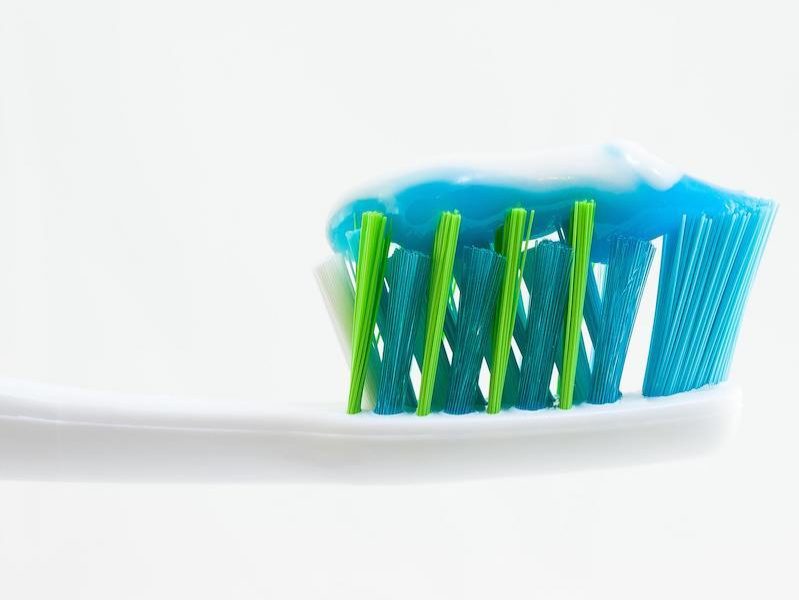- 06 Nov 2020
Is Toothpaste Without Fluoride Any Good?
Fluoride has been in just about any toothpaste for the past 65 years. But have you ever wondered why?
It turns out that cavities are to blame.
Up until the 1950s, Americans had been using a soap-and-water-based paste to brush their teeth with. Brushing helped dislodge food particles, but people were still developing around 700 million cavities a year.
Interested by this cavity epidemic, Proctor and Gamble, a Cincinnati-based consumer goods firm, invested money into research to explore how fluoride in toothpaste might help prevent tooth decay. Fluoride had been proven in the 1930s to slow tooth decay in both children and adults.
Starting in 1950, they invested nearly 3 million dollars into the research project at Indiana University. By 1952, a cavity-preventing toothpaste prototype was ready. Clinical trials involving nearly 2000 people followed, and in 1956, the world’s first fluoride-based toothpaste, called ‘Crest with Fluoristan’ was launched.
The rest, as they say, is history. By 1960, Crest Toothpaste had received a Seal of Acceptance from the American Dental Association. Other consumer goods companies caught onto the product and began developing their own fluoride-based formulas.
Today, several dentists recommend brushing teeth with fluoridated toothpaste. But there’s been a growing number of people who question the usefulness of fluoride in toothpaste, and whether toothpaste without fluoride would do more good for teeth.
If you’re concerned about fluoride, we’re here to help. We’ve compiled information below that explores the pros and cons of fluoride that you can use to make informed consumer decisions the next time you buy toothpaste.
Why does toothpaste have fluoride?
There’s fluoride in our toothpaste because decades of research says that it’s the best available ingredient to help prevent cavities.
Our teeth are constantly exposed to a wide range of bacteria and food particles that slowly erode our enamel. Plaque builds up over time, which can cause gum disease and tooth decay.
To reverse these effects, fluoride was put into toothpaste so people could keep their teeth clean and strong at the same time. Naturally found in freshwater and ocean water, fluoride was discovered to prevent tooth decay according to research done in the 1930s.
When we brush our teeth everyday with fluoridated toothpaste, we are applying a topical treatment of fluoride onto teeth that are decaying.
The fluoride remineralizes the decaying areas, meaning it rebuilds the weakened tooth enamel by causing natural minerals like calcium and phosphate in our saliva to stick to the decaying tooth.
Over time, the decaying tooth becomes strengthened, along with the other healthy teeth in our mouth. Fluoride keeps our teeth healthy between the dental checkups we are advised to have every 6 months.
Pros and cons of fluoride in toothpaste
Pros
In the nearly 70 years since fluoride was introduced in toothpaste, dentists and several health experts have touted the benefits of toothpaste. One of the key benefits of fluoride, they argue, is that it reduces oral disease and treatment costs.
Data from the Centers for Disease Control (CDC) show that more than 80% of Americans will have had at least one cavity by the age of 34. Combined with other oral diseases such as gum disease, America as a whole spends more than 124 billion dollars per year on dental treatments.
Experts say that brushing our teeth daily with fluoridated toothpaste can help prevent cavities and other diseases, saving us plenty of money in the long term.
For communities with limited access to dental treatment and checks, fluoridated toothpaste is put forward as the best available first line of defense against future oral health complications.
Another argument put forward by supporters of fluoridated toothpaste is that fluoride helps children develop healthy teeth. Cavities affect thousands of children in the United States, and if left untreated, could lead to serious problems with eating, speaking, and playing.
Studies have shown that children who brush their teeth everyday with fluoride toothpaste have less tooth decay than those who don’t. This advice is echoed by the American Academy of Pediatric Dentistry who suggests that children aged between 6 months and 16 years receive fluoride in any form everyday.
In general, people who are pro-fluoride focus on the preventative effects that fluoridated toothpaste can offer for our long-term dental hygiene. As a public health measure, fluoride can prevent us from spending our savings on costly dental treatments.
Cons
Those on the other side of the fluoride debate see fluoridated toothpaste as a public health danger.
One of the most common concerns highlighted is the heightened risk of bone fracture that repeated fluoride application can create. It’s believed that ingesting too much fluoride can increase the density of minerals in bone as well as the likelihood of fractures in the hip area and lower extremities.
Research results have so far been mixed on this issue. Some clinical trials using fluoride to treat osteoporosis in elderly adults and tests on animals suggest that fluoride exposure weakens bones. More research is still being conducted to accurately determine the detrimental effects of fluoride use.
Another concern centers on how fluoride affects our children’s teeth. Fluorosis, which is a cosmetic condition that creates white streaks on teeth, is reported to affect young children who are exposed to too much fluoride.
This condition starts developing when the teeth are still under the gums. Children under 8 are most likely to experience this condition as permanent teeth are still forming, but the condition can last until adulthood.
The majority of fluorosis cases are mild; only less than 1% of cases are considered to be severe. Fluorosis is not a disease but because of how it appears on teeth, it could be alarming to parents and children.
Fluoride has also been found to interfere with thyroid health. Recent studies have discovered that some people who ingest more than normal amounts of fluoride can develop hypothyroidism, a common disorder where your thyroid glands don’t produce enough thyroid hormones.
Also known as underactive thyroid disease, this disorder has a 30% higher chance of occurrence in people who consume fluoridated tap water and use fluoridated toothpaste together.
Patients with this condition may experience fatigue, muscle/joint pain, menstrual disturbances and more.
While there may be apparent risks of fluoride exposure, research on this issue is not conclusive. It is not yet clear what types of fluoride can cause each of these ailments. And scientists and researchers have yet to discover whether age and other physical conditions play a role in our body’s response to fluoride.
That said, it’s understandable why some people have concerns about the ethics of adding fluoride to everyday consumer products and water supplies. With more research, we will have a better understanding of the link between fluoride and physical ailments.
Is it safe to use fluoride-free toothpaste?
Yes, it’s safe to use toothpaste without fluoride.
It may not strengthen your teeth like fluoridated toothpaste does, but it will give your teeth a clean scrub. Fluoride-free toothpastes contain natural ingredients like hydrated silica that act as a mild abrasive to remove plaque, bacteria, and stains.
Although fluoride-free toothpaste will not help us fight cavities and remineralize teeth, they provide other benefits. For those of us who are concerned about the risks of fluoride, fluoride-free toothpastes significantly reduce our risk of exposure to the element.
That allows you to put your mind at ease. You won’t have to worry about getting dental fluorosis or accidentally swallowing toothpaste while brushing.
With new questions being raised about the usefulness of fluoride, we are also beginning to see a greater examination of how cavities form. Recent studies indicate that cavities start in tiny crevices that neither brushing nor flossing can reach.
Sugary foods and other food particles lodged in our teeth may cause longer damage to our teeth. This preliminary finding has placed a new value on the simple act of brushing our teeth.
Some experts argue that mechanical toothbrushing alone can remove food particles and reduce gum disease. It can even help people recover from oral surgery.
Fluoride-free toothpaste could be a much better natural alternative to fluoridated toothpaste for toothbrushing.
Best-selling toothpastes without fluoride
Vitaminpaste Fluoride-Free Toothpaste

Photo from Amazon
Vitaminpaste is the only toothpaste on the market that’s both fluoride-free and rich in vitamin supplements. Each time you brush your teeth, you’re guaranteed to get at least 50% of your daily vitamins and minerals, from calcium to Vitamin B6.
Vitaminpaste also whitens teeth, fights tartar, and has a clean mint flavour. And instead of fluoride, Vitaminpaste uses Xylitol, which is known to help reduce the risk of tooth decay.
All the ingredients in Vitaminpaste come from natural sources and do not pose the risk of dental and skeletal fluorosis. It’s highly suitable for health-conscious families looking for a safe alternative to fluoride-based toothpastes.
Tom of Maine’s Fluoride-Free Toothpaste

Photo from Amazon
Tom of Maine’s fluoride-free toothpaste helps prevent tartar buildup and is made from all natural ingredients. It contains zinc citrate, xylitol, and peppermint oil, which give you a clean fresh feel everytime you brush your teeth.
This toothpaste also helps whiten your teeth and remove plaque and bacteria that cause cavities.
Hello Activated Charcoal Fluoride-Free Toothpaste

Photo from Amazon
Hello’s activated charcoal toothpaste without fluoride is a certified organic formula made from sustainable bamboo charcoal. It’s colored black but don’t let that phase you. The charcoal whitens teeth and freshens your breath the natural way.
This toothpaste contains no fluoride, alcohol, or artificial sweeteners. It’s totally vegan and certified cruelty-free.


